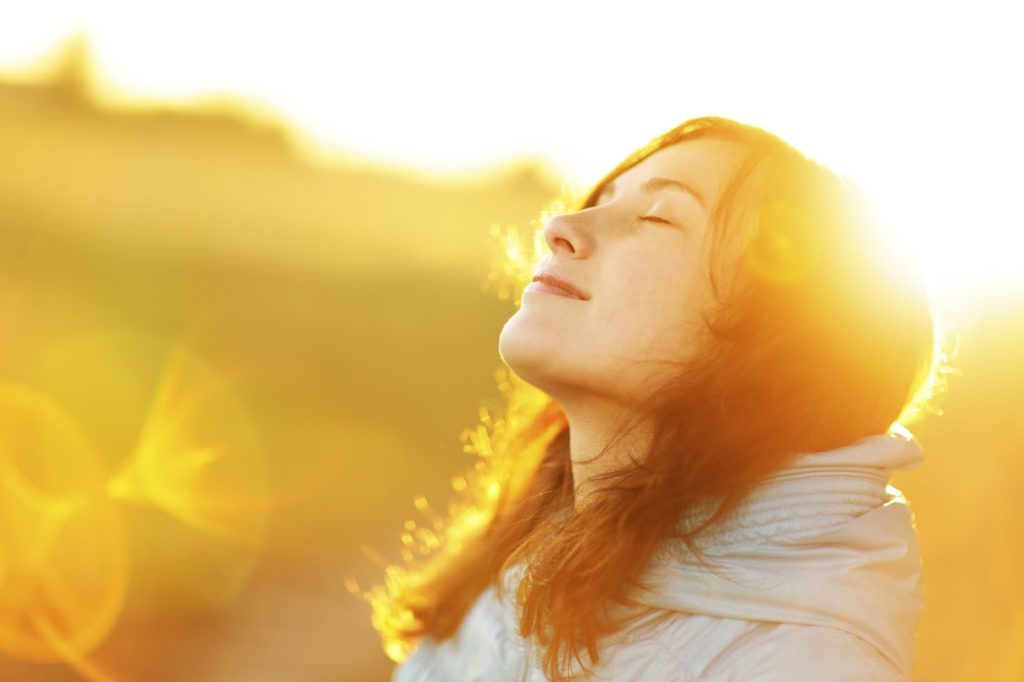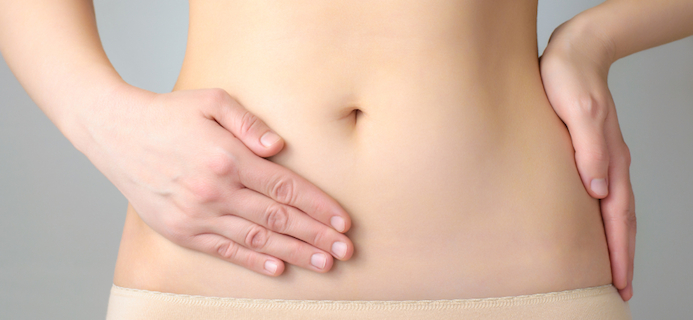
Most Americans spend some time outdoors in the summer either working, vacationing or playing, exposing themselves to the sun. Some people bask for hours by the pool, slathering on high level sun protective factor (SPF) sunscreen they believe will protect them against the sun’s ultraviolet (UV) rays while others fearfully avoid the sun, covering their entire bodies in protective clothing and avoiding daytime outdoor activities.
Like most things, sun safety involves finding balance. The key is not overexposure or avoiding exposure altogether, but to expose our bodies to the sun’s rays for a few minutes at a time.
It’s understandable why people would fear too much sun exposure. According to the Environmental Working Group (EWG), more than two million Americans develop skin cancer each year. Half of Americans who live to 65 will be diagnosed at least once with rarely fatal forms of skin cancer called basal and squamous cell carcinomas, both linked to sun exposure.
Too much sunlight can create oxidative stress or oxidation. Think of oxidation as the rusting of a car or a sliced apple turning brown. The same situation creates wrinkles on your face from years of too much sun.
At the same time, we were meant to enjoy sunlight. Staying out of the sun or over-relying on sunblock can make us depressed or anxious and contribute to numerous problems. That’s because when we avoid sun exposure, we often become deficient in the sunshine vitamin – vitamin D – an important key to health and vitality.
You May Be Deficient In The Sunshine Vitamin
Basking in the sun feels good, but it also allows your body to make vitamin D.
Some people fear sunlight because of its potential cancer risk. Yet interestingly, the one vitamin the sun helps supply can actually protect against skin cancer. Optimal vitamin D levels can reduce the risk of melanoma and help protect against other cancers.
Vitamin D is almost totally absent from our food supply. We require up to 25 times more than what the government’s Recommended Daily Allowances (RDAs) recommend for us to be healthy. Vitamin D deficiencies are the hidden cause of so much suffering, and it is so easy to treat. http://ods.od.nih.gov/factsheets/VitaminD-HealthProfessional/.
Each nutrient has its role, but vitamin D deficiency is a major epidemic that is off the radar for most doctors and public health officials. It has been linked to depression, dementia, an increased risk of death and even autism. While almost never diagnosed, vitamin D deficiency affects over half of the population and has been linked to many cancers, high blood pressure, heart disease, diabetes, depression, fibromyalgia, chronic muscle pain, bone loss and autoimmune diseases like multiple sclerosis.
Most doctors think that if you don’t have rickets you don’t have vitamin D deficiency. They couldn’t be more wrong. The minimum dosage to avoid rickets is 400 international units (IU) a day. More importantly, we were designed to have much more and need approximately 5,000 to 10,000 IU a day to be healthy. That’s quite a range between avoiding disease and maintaining optimal health.
Amazing things start to happen when vitamin D statuses reach optimal levels. There’s no doubt that vitamin D is an incredible asset to your health.
Your body makes vitamin D when it’s exposed to sunlight. In fact, 80 to 100 percent of the vitamin D we need is created because of exposure to the sun. The sun exposure that makes our skin a bit red (called 1 minimum erythemal dose) produces the equivalent of 10,000 to 25,000 IU of vitamin D in our bodies.
Most of us aren’t exposed to enough sunlight.
Overuse of sunscreen is one reason. While these products help protect against skin cancer, they also block a whopping 97 percent of your body’s vitamin D production.
If you live in a northern climate, you’re not getting enough sun (and therefore vitamin D) to begin with, especially during winter. And you’re probably not eating enough of the few natural dietary sources of vitamin D, including fatty wild fish like mackerel, herring, and cod liver oil.
Plus, aging skin produces less vitamin D — the average 70-year-old creates only 25 percent of the vitamin D that a 20-year-old does.
Skin color makes a difference, too. People with dark skin produce less vitamin D. Orthodox Jews and Muslims who keep themselves covered all the time sometimes have very severe deficiencies.
I am a strong proponent of supplementing with a high-quality vitamin D3. Beyond that, the best way to make vitamin D involves full-body sun exposure for about 15 to 20 minutes between 10 a.m. and 2 p.m. daily, without sunscreen (although I would recommend sunscreen on your face).
This works only in the summer, so I would take additional vitamin D to optimize the levels. Most people require an additional 2,000 to 5,000 IU of vitamin D3 a day.
The exact amount needed to get blood levels to the optimal range (50 to 80 ng/ml) will vary depending on your age, genetics, how far north of the equator you live, how much time you spend in the sun and even the time of the year.
I encourage you to test your vitamin D levels regularly to ensure your blood levels fall within the optimal range.
What Kind of Protection Should I Use in the Sun?
You may think the best protection from too much sun would be to slather on a high-SPF sunscreen all over your body, but you would be wrong.
The EWG recommends against choosing a high-SPF sunscreen and that manufacturers should stop selling high SPF products altogether.
“[People] are more likely to use high SPF products improperly and as a result may expose themselves to more harmful ultraviolet radiation than people relying on products with lower SPF,” says their report.
That doesn’t mean you shouldn’t use sunscreen. But you want to take other precautionary measures first and then use a good sunscreen but don’t over-rely on it.
“When people use sunscreen properly to prevent sunburn, they often extend their time in the sun and increase exposure to UVA rays,” the EWG says. The difference is UVB rays make up about three to five percent of the ultraviolet spectrum, whereas UVA rays are more prevalent and penetrate deeper into your body.
Not only are we overusing sunscreen or choosing the wrong SPF; most over-the-counter sunscreens also contain harmful ingredients. “American sunscreens are far from ideal and not as good as their European counterparts,” the EWG says. “Until FDA tightens its rules, people will continue to misuse inferior products.”
In 2015, the EWG found 80 percent of the 1,700 products they examined provided inferior sun protection or contained worrisome ingredients like oxybenzone.
“Only 21 percent of the sunscreens, 19 percent of the moisturizers with SPF and 21 percent of the lip balms in EWG’s database for 2015 scored 1 or 2,” says the report. “Most major sunscreen brands…score poorly. EWG estimates that more than half of the sunscreens on the American market would not make it to store shelves in Europe.”
The EWG also cautions against sunscreens with vitamin A. One study by U.S. government scientists says retinyl palmitate (a form of vitamin A) could speed the development of skin tumors and lesions when applied to the skin in the presence of sunlight.
That’s particularly disturbing when you consider the sunscreen industry adds vitamin A to nearly 18 percent of the beach and sport sunscreens, 17 percent of moisturizers with SPF, and 13 percent of all SPF-rated lip products in EWG’s 2015 sunscreen database.
The bottom line for sunscreen: Choose the right one, opt for a lower-SPF type and don’t over-rely on it for total protection.
Over-exposure can do far more than just give you a miserable sunburn. Enjoying the sun while being cautious and minimizing risks by practicing these 6 sun safety strategies:
- Get a minimum of 20 minutes of sun exposure, preferably in the morning, each day. Among its benefits, sunlight triggers your brain to release specific chemicals and hormones such as melatonin that are vital to healthy sleep, mood and aging.
- Stay hydrated. Many of us are chronically dehydrated and consume caffeinated drinks or alcoholic beverage when we’re basking in the sun, which makes us even more dehydrated. That is why it’s so important to drink at least eight glasses of water every day, especially on hot days.
- Only use sunscreen if you need it. According to the EWG, sunscreen should be your last resort when going into the sun.
- If you use sunscreen, scrutinize ingredients. If you wouldn’t eat it, don’t put it on your skin. Stop using creams, sun block and cosmetics that contain paraben, petrochemicals, lead or other toxins. Drugs and chemicals are absorbed through your skin.
- Over-exposure can damage your skin and increase your risk for skin cancer. Reduce your risk by seeking shade under an umbrella, tree or other shelter before the sun becomes too much for you. Protective clothing can also shield your skin from sun overexposure.
- The EWG recommends these skin cancer prevention strategies: covering up (sunglasses and protective clothing), don’t get burned, choose a sunscreen with optimal UVA protection; avoid tanning beds and getting optimal vitamin D to minimize your skin cancer risk. While studies indicate regular sunscreen use lowers the risk of squamous cell carcinoma, researchers have not found strong evidence that sunscreen use prevents basal cell carcinoma. Visit your dermatologist regularly, especially if you notice any unusual moles or other skin irritations.
An important part of optimal health is getting enough sunlight. It helps your body create vitamin D, a nutrient that you cannot get enough of from foods. It is a good idea to moderate your exposure to the sun. Caucasians should spend approximately five to 20 minutes per day, or until their skin turns the slightest shade of pink. People with darker complexions will need to spend more time to get enough sun.
More Natural Ways to Protect Yourself from Overexposure to the Sun
If you are going to stay out in the sun a long period of time, then you should use a safe all-natural sunscreen that is free of harmful chemicals. Additionally, you can prepare your body to have the best defense against overexposure to the sun’s harmful UVA rays with these simple tips:
Consume a healthy diet rich in antioxidants. This is a useful strategy that not only provides your body with the resources to help counter damage from exposure to harmful UV radiation, but also helps ensure that you stay healthy. The best sources of antioxidants are fresh, raw, unprocessed foods, especially colorful organic vegetables.
Wear a cap with a visor when you go out in the sun. This will protect the sensitive areas on your face from direct sunlight. You may want to carry an umbrella when you go out during the day. Wear light, cotton clothing. Cotton clothing provides you with about SPF 15.
Since many factors influence the risk of skin cancer and vitamin D deficiency, it’s important to talk to your health care practitioner about your individual risks. Being safe in sun doesn’t mean you can’t have fun outdoors this summer, just be smart about it.



